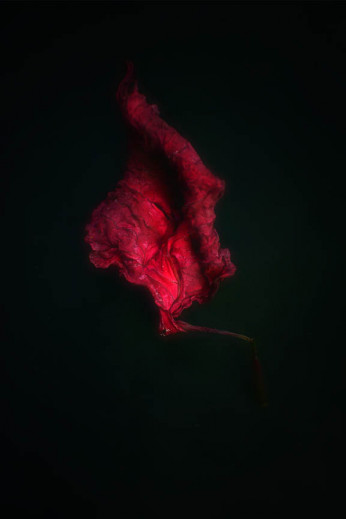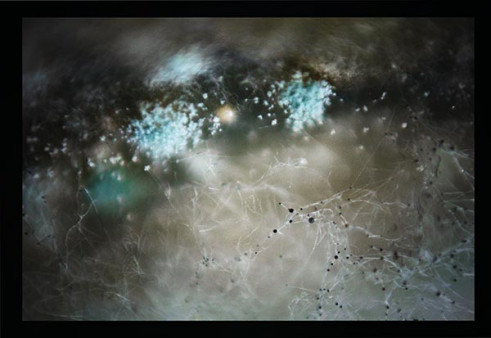© Pint of Science, 2025. All rights reserved.
Sara Gaynor is a visual artist & photographer based in Nottingham. She is an Associate Member of Backlit Gallery, Nottingham. Her work adopts a Fine Art, Conceptual and Narrative style with inspirations drawn from nature, environment and space, emotions and instinct. Sara uses subject and self-portrait in much of her work and her experimentation often bears fruition from her time spent in natural spaces at her non-traditional studio space in Derbyshire.
Sara has created two pieces of work in collaboration with Professor of Bioscience, Matt Dickinson (Nottingham) for Creative Reactions 2018. She describes their collaboration:
"Through discussion with Matt, it became clear that my creative interest was awoken by the possible visual imagery of certain bacteria – the idea of bacteria ‘exposure’, particularly phytoplasmas1 and the ‘metaphorical’ mortality of flower to leaf, by the leafhopper insect. I am further interested in the long-term effect of other plant pathology around the world and the possible issues for human mortality. Over a period of time, I was able to formulate ideas to create my own visual interpretations through the medium of photography."

Mortality of Flower. Still life photograph
The photographs for exhibition show, in ‘Mortality of Flower’ the ‘metaphorical’ death/decay of the beautiful Ponsietta flower when exposed to certain bacteria which change the flower into a green leaf; the mortal nature of how phytoplasma attacks this beautiful flower and its loss of colour.

Otherworld. Bacteria grown over a 7 day period from the Ponsietta flower used in "Mortality of Flower" photograph
For ‘Otherworld’, through scientific experimentation using pre-prepared petri dishes, Sara grew and photographed bacteria already present on the Ponsietta flower. The final result bore a beautiful visual, otherworldly landscape captured on a macro level.
1Phytoplasmas are bacteria that cause plant diseases, for example in coconut plants.
About this post
This blog post is part of the Creative Reactions Nottingham 2020 online exhibition. Over the month of September, we will be bringing you different examples of collaborations between art and science, including a chance to get creative yourself. More Creative Reactions Nottingham blog posts.


